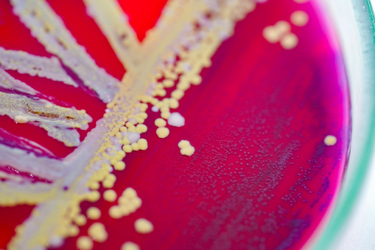Environmental Monitoring And Sterility Assurance Control For Medical Devices And Combination Products
By Melissa Stappen and Stephen E. Langille, Ph.D., ValSource, Inc.

The amount of environmental control, environmental monitoring, and finished product testing necessary to ensure medicinal product microbiological safety and product quality depends on factors such as the product dosage form, route of administration and, if applicable, the method of product sterilization.
For instance, non-sterile products for oral administration possessing little or no water activity may require minimal environmental monitoring to ensure finished product microbiological quality.1,2 In contrast, sterile injectable drug and biological products manufactured by aseptic processing require stringent manufacturing controls and environmental monitoring to prevent microbiological contamination.3,4
These drugs and biological products are also subject to finished product sterility, endotoxin, and particulate testing due to the body’s sensitivity in areas where they are administered and the potential for non-sterile products to harm the patient. Likewise, sterile medical devices (e.g., implants, catheters, IV sets) and device combination products (e.g., drug-eluting stents, pumps, and cartridge delivery systems) must also be manufactured using appropriate levels of environmental control to ensure the finished product’s microbiological quality. For these types of products, the level of environmental control depends on the nature of the product, pre-sterilization bioburden requirements, and the method of product sterilization.
Environmental Monitoring — How Much is Enough?
Like sterile drug or biological products, sterile implantable devices must provide a sterility assurance level (SAL) of at least 10-6. 5 A sterilization cycle’s lethality and the SAL for all terminally sterilized products depends on the robustness of the sterilization cycle applied to the product, as well as the resistance and population of the product bioburden prior to sterilization. Thus, a consistent, reproducible, and effective sterilization process must consider both the bioburden and the dose of sterilant to ensure adequate product sterilization.
Medical device terminal sterilization can be conducted by established methods supported by precedent, literature, or standards (e.g., heat, ionizing radiation, ethylene oxide, hydrogen peroxide, or ozone) or novel sterilization methods (e.g., microwave radiation, UV or high intensity light, or vaporized peracetic acid) with less literature or regulatory history to support their use.5 Use of novel methods will likely involve additional regulatory oversight, but is permissible with adequate supporting scientific justification and validation information.
Overkill cycles, often delivered with moist heat or ionizing radiation sterilization methods, usually deliver doses of sterilant many orders of magnitude greater than even large numbers of the most resistant organisms could withstand. This often leads manufacturers to question why bioburden monitoring or environmental control is necessary. However, even when overkill cycles are used, control and testing of the pre-sterilization bioburden is necessary to ensure that the pre-sterilization microbial population can be neutralized by the target dose of sterilant.4,6,7
Pre-sterilization bioburden testing also helps verify that the non-sterile bulk product is stored and handled under suitable conditions to prevent contamination with “filth” or microbial by-products (e.g., toxins) that may not be destroyed by the sterilization process. Environmental monitoring of the manufacturing area is also necessary to ensure that products are not prepared, packed, or held in unsanitary conditions that fail to meet current good manufacturing practice (cGMP) or allow the devices to become contaminated or rendered injurious to health.8
Bioburden-based sterilization cycles use reduced doses of sterilant to protect sensitive product and/or container closure system components. These sterilization cycles generally require additional monitoring and identification of the pre-sterilization bioburden and environmental isolates to ensure the number and resistance of organisms present in or on the product prior to sterilization don’t impact the success of the sterilization cycle or the sterility of the finished product.
Although the definitions of insanitary conditions and “filth” are open to interpretation, the microbiological quality of sterile product manufacturing environments, even those used in conjunction with overkill sterilization cycles, should be monitored. Environments, behavior, or a lack of control that could introduce filth to the product — in the form of non-viable particulates, excessive levels of mold, coliforms, or other deleterious microorganisms — could be the subject of increased regulatory scrutiny or, in extreme circumstances, the cause of product adulteration.
The extent of environmental control and monitoring for terminally sterilized products will not be nearly as extensive and burdensome as that required for aseptically processed products but demonstrated microbial control of the manufacturing environment through tracking and trending of the microbial population is highly recommended for sterile product manufacturing operations.9,10
Aseptic processing involves the maintenance of sterility for pre-sterilized components during product assembly. Aseptic processing of drugs, biologics, devices, and combination products should be conducted when terminal sterilization is not feasible — for example, when the application of sterilant leads to unacceptable impurity levels or product component degradation.3,4 Medical devices or combination products manufactured using aseptic processing require additional environmental monitoring compared to products manufactured using terminal sterilization processes due to the need for rigorous environmental control during sterile component assembly.
Aseptic processing takes place in Grade A/ISO-5/Class 100 areas with surrounding areas of sufficient environmental control to prevent component and product contamination during the aseptic assembly process. A contamination control strategy is particularly important for aseptic processing operations and must consider factors such as raw material bioburden, container and component sterilization, facility cleaning and sanitization, air handling and flow, equipment sterilization and operating conditions, personnel gowning and behavior, finished product testing, and the methods and frequency of environmental monitoring.3,4
Regular aseptic processing simulations are also required to help demonstrate the contamination control strategy’s efficacy.3,4,11 Fortunately, a number of guidance documents, standards, and compendial chapters can be used in conjunction with a thorough risk assessment to establish and maintain a suitable environmental monitoring program in these environments.3,4,12,13,14,15
Risk Assessments and Trending
Risk assessments are used to identify hazards associated with manufacturing processes and establish an environmental monitoring and control program commensurate with the overall risk to product quality and patient safety. The U.S. FDA provides little guidance on the topic of microbiological control for sterile device manufacturing save for the general comments on adulterated drugs and devices provided in the Food Drug and Cosmetic Act, section 501.8
The FDA’s Guidance on Submission and Review of Sterility Information in Premarket Notification (510(k)) Submissions for Devices Labeled as Sterile5 states that manufacturing procedures should provide a SAL of 10-6 but leaves the methods by which that SAL is achieved up to the manufacturer.
The current draft of the European Medicines Agency Annex 14 implies that terminally sterilized medicinal products should be manufactured in at least a Grade D environment, but does not differentiate between sterile drugs/biologics, sterile medical devices, or drug/device combination products. The environmental monitoring of Grade D and more highly controlled areas may be established through the risk assessment and air cleanliness classification — per ISO 14644-114 — along with sampling and collection programs appropriate for the air cleanliness classification of the room or area in question.3,4,12,13 Controlled non-classified areas used for manufacturing operations may also be subject to some, albeit significantly reduced, level of environmental monitoring to ensure the maintenance of sanitary conditions for the preparation, packaging, or holding of the sterile medical device.
The tracking and trending of microbiological contaminants can be helpful for identifying potential sources of contamination, reacting to adverse trends before they can affect product quality, and assessing the overall state of process control. Factors such as seasonal changes, nearby facility construction projects, or personnel or equipment turnover can affect the numbers and types of organisms isolated from the manufacturing environment. Alert and action levels for the recovery of microorganisms in manufacturing areas should be established based on historical data and/or regulatory guidance, compendial recommendations, or available standards.3,4,12,13
Microbial identification, at least to the genus and preferably to the species level, can help determine the source of the contamination, the risk the organisms pose to product quality, and the appropriate remediation response. For instance, fluctuations in total yeast and mold counts may indicate humidity control issues related to seasonal variations or standing water in the manufacturing facility. High levels of Bacillus species may be due to operators tracking organisms in from outdoor environments and may necessitate alternate gowning, flow, or cleaning/sanitization procedures to neutralize spore-forming bacteria. The identification of E. coli or other coliforms in the manufacturing area could be indicative of operator sanitization issues and the need for retraining or increased personnel monitoring.
Historical data related to the numbers and types of microorganisms identified in critical areas is also a powerful tool for demonstrating environmental control of the facility during audits and inspections. Having that data available in a sortable electronic format to areas, rooms, products, or operators (if applicable) will help staff, management, and regulatory authorities evaluate the appropriate level of control for a particular facility, manufacturing area, or product.
Sterility Assurance Control
In addition to the environmental monitoring, aseptic processing, and sterilization methods, sterility assurance controls are also required to confirm the product meets release specifications for sale/distribution in global markets. Finished product testing such as sterility, endotoxin, and visible particulate testing — described in USP chapters <71>,<85>, <151>, <161>, <1085>, <790>, and <1790> — are examples of those controls.16-22
In cases where test failures occur, a robust investigation followed by corrective and preventative actions (CAPAs) must be implemented. Specifically, when sterility test failures occur, the investigation must include requirements for organism identification. Finished product sterility testing may be waived in some circumstances through parametric release programs where sterility assurance is demonstrated through the control of critical process parameters, such as thermal input or radiation dose.23,24,25
Monitoring these critical process parameters eliminates the need to draw sterility test samples from the finished batch of drug product and offers greater overall sterility assurance for the product by building quality into the process and the product, rather than relying on finished product testing.
Additional upstream controls that can increase the overall level of sterility assurance for aseptically processed and terminally sterilized products include incoming raw material testing programs, bioburden evaluations, and in-process testing regimens. These activities also support the environmental monitoring program with information related to viable and non-viable product contaminants well before aseptic processing or other sterilization processes are employed.
Summary
The establishment of an environmental monitoring and microbiological control program for sterile medicinal devices is necessary to ensure microbiological safety and finished product quality. The level of environmental control is primarily dependent on the method of product sterilization.
Overkill terminal sterilization cycles require fewer environmental controls and less stringent environmental monitoring but should still be robust enough to ensure products are prepared, packed, and/or held under sanitary conditions.
The need for environmental control and monitoring increases with the use of bioburden-based terminal sterilization cycles, which require additional monitoring of the pre-sterilization bioburden and manufacturing environment to ensure the types and numbers of organisms present do not pose a challenge to the reduced amounts of sterilant applied to the device. Aseptic processing operations require the greatest amount of environmental monitoring oversight due to the need to maintain aseptic environments to prevent contamination during product assembly. The environmental monitoring program should be customized to fit the sterilization process and nuances of the manufacturing facility.
Although superb upstream control may eliminate the need for some finished product testing, release testing to meet product specifications such as sterility, endotoxins, and particulate matter can serve as a final check of the manufacturing and sterilization controls. Together, these preventative, monitoring, and testing methods serve to ensure the microbiological safety and quality of the finished medical device or combination product.
References:
- United States Pharmacopoeia Chapter <1112> Application of Water Activity Determination to Nonsterile Pharmaceutical Products. https://online.uspnf.com/uspnf/document/1_GUID-088FEEB1-8BD8-4120-AC2A-106AAE5E8E4E_1_en-US?source=Search%20Results&highlight=1112. USP42-NF37. Accessed 29-July-2020.
- United States Pharmacopoeia Chapter <1115> Bioburden Control of Nonsterile Drug Substances and Products. https://online.uspnf.com/uspnf/document/1_GUID-D902C088-052D-4B4A-94C0-C4363EC19634_1_en-US?source=Search%20Results&highlight=1115. USP42-NF37. Accessed 29-July-2020.
- FDA Guidance for Industry: Sterile Drug Products Produced by Aseptic Processing – Current Good Manufacturing Practice. US Department of Health and Human Services. 2004.
- EMA Annex 1 – Manufacture of Sterile Products. https://ec.europa.eu/health/sites/health/files/files/gmp/2020_annex1ps_sterile_medicinal_products_en.pdf. Accessed 27-July-2020.
- FDA Guidance for Industry and Food and Drug Administration Staff: Submission and Review of Sterility Information in Premarket Notification (510(k)) Submissions for Devices Labeled as Sterile. US Department of Health and Human Services. 2016
- ANSI/AAMI/ISO 11137-2. Sterilization of Health Care Products – Radiation – Part 2: Establishing the Sterilization Dose. 2006.
- FDA Guidance for Industry for the Submission Documentation for Sterilization Process Validation in Applications for Human and Veterinary Drug Products. Center for Drug Evaluation and Research/Center for Veterinary Medicine. 1994.
- FDA (2020) https://www.govinfo.gov/content/pkg/USCODE-2011-title21/pdf/USCODE-2011-title21-chap9-subchapV-partA-sec351.pdf. Accessed 29-July-2020.
- Food and Drug Administration Compliance Program Guidance Manual 7356.002A: Sterile Drug Product Inspections. 2015.
- AAMI Technical Information Report 52. Environmental Monitoring for Terminally Sterilized Healthcare Products. 2017.
- International Standard - ISO 13408-7. Aseptic Processing of Health Care Products – Part 7: Alternative Processes for Medical Devices and Combination Products. 2012.
- Parenteral Drug Association Technical Report 13. Fundamentals of an Environmental Monitoring Program. 2014.
- United States Pharmacopoeia Chapter <1116> Microbiological Control and Monitoring of Aseptic Processing Environments. https://online.uspnf.com/uspnf/document/1_GUID-B9A1739F-E171-4E11-A0C7-E43A318EA17F_1_en-US?source=Search%20Results&highlight=1116. USP42-NF37. Accessed 29-July-2020.
- International Standard - ISO 14644-1 Cleanrooms and Associated Controlled Environments – Part 1 Classification of Air Cleanliness by Particle Concentration. 2015.
- International Standard – ISO 13408-1 Aseptic Processing of Health Care Products – Part 1: General Requirements. 2008.
- United States Pharmacopoeia Chapter <71> Sterility Tests. https://online.uspnf.com/uspnf/document/1_GUID-481C30EA-8A49-4A77-9E81-D0CD7C533498_1_en-US?source=Search%20Results&highlight=71. USP42-NF37. Accessed 29-July-2020.
- United States Pharmacopoeia Chapter <85> Bacterial Endotoxins Test. https://online.uspnf.com/uspnf/document/1_GUID-F9D9BFA5-099F-452C-9711-47674B37C1CC_2_en-US?source=Search%20Results&highlight=85. USP42-NF37. Accessed 29-July-2020.
- United States Pharmacopoeia Chapter <151> Pyrogen Test. https://online.uspnf.com/uspnf/document/1_GUID-162C7E78-8A02-4423-970C-5DF047F57DC2_1_en-US?source=Search%20Results&highlight=151. USP42-NF37. Accessed 29-July-2020.
- United States Pharmacopoeia Chapter <161> Medical Devices – Bacterial Endotoxin and Pyrogen Tests. https://online.uspnf.com/uspnf/document/1_GUID-3553FBAE-2484-4850-ACC0-ECF20BDF9C46_1_en-US?source=Search%20Results&highlight=161. USP42-NF37. Accessed 29-July-2020.
- United States Pharmacopoeia Chapter <1085> Guidance on Endotoxins Test. https://online.uspnf.com/uspnf/search?query=1085 USP42-NF37. Accessed 29-July-2020.
- United States Pharmacopoeia Chapter <790> Visible Particulates in Injections. https://online.uspnf.com/uspnf/document/1_GUID-40E8EDAA-AF74-42B6-9F11-3EC14004300B_1_en-US?source=Search%20Results&highlight=790. USP42-NF37. Accessed 29-July-2020.
- United States Pharmacopoeia Chapter <1790> Visual Inspection of Injections. https://online.uspnf.com/uspnf/document/1_GUID-C4739029-5BE7-4717-A2DD-E872411AF89F_4_en-US?source=Search%20Results&highlight=1790. USP42-NF37. Accessed 29-July-2020.
- EMA Guideline on Parametric Release. https://www.ema.europa.eu/en/documents/scientific-guideline/guideline-parametric-release_en.pdf. Accessed 31-July-2020.
- United States Pharmacopoeia Chapter <1222> Terminally Sterilized Pharmaceutical Products – Parametric Release. https://online.uspnf.com/uspnf/document/1_GUID-47A43122-C422-4E0B-BF92-3B408614555A_6_en-US?source=Search%20Results&highlight=1222. Accessed 31-July-2020.
- FDA Guidance for Industry: Submission of Documentation in Applications for Parametric Release of Human and Veterinary Drug Products Terminally Sterilized by Moist Heat Processes. U.S. Department of Health and Human Services. 2010.
About The Authors:
 Melissa Stappen, senior consultant with ValSource, LLC, has over 20 years of experience in the pharmaceutical, medical device, biotech, and clinical/healthcare provider settings. During her career, she has provided support to quality assurance, quality control, and compliance departments as a subject matter expert relating to endotoxin and microbial contamination control. Her current role of validation consultant emphasizes risk management based programs for laboratory instrumentation, methods, and equipment. You can email her at mstappen@valsource.com or connect with her on LinkedIn.
Melissa Stappen, senior consultant with ValSource, LLC, has over 20 years of experience in the pharmaceutical, medical device, biotech, and clinical/healthcare provider settings. During her career, she has provided support to quality assurance, quality control, and compliance departments as a subject matter expert relating to endotoxin and microbial contamination control. Her current role of validation consultant emphasizes risk management based programs for laboratory instrumentation, methods, and equipment. You can email her at mstappen@valsource.com or connect with her on LinkedIn.
 Stephen Langille, Ph.D., is a senior microbiology consultant at ValSource, Inc. He specializes in microbiological and particulate matter contamination control. He holds a B.S. degree in biology from the University of Massachusetts and a Ph.D. in microbiology from the University of Maryland. He spent 19 years with the FDA as a microbiology reviewer, branch chief, and director of the Division of Microbiology Assessment in the Center for Drug Evaluation and Research. He can be reached at slangille@valsource.com.
Stephen Langille, Ph.D., is a senior microbiology consultant at ValSource, Inc. He specializes in microbiological and particulate matter contamination control. He holds a B.S. degree in biology from the University of Massachusetts and a Ph.D. in microbiology from the University of Maryland. He spent 19 years with the FDA as a microbiology reviewer, branch chief, and director of the Division of Microbiology Assessment in the Center for Drug Evaluation and Research. He can be reached at slangille@valsource.com.

